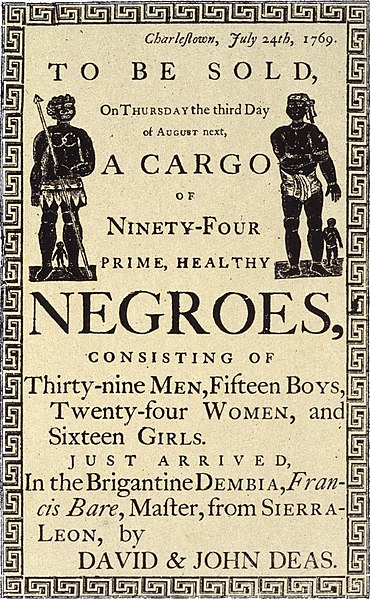The Middle Passage was the stage of the Atlantic slave trade in which millions of enslaved Africans were transported to the Americas as part of the triangular slave trade. Ships departed Europe for African markets with manufactured goods, which were then traded for slaves with rulers of African states and other African slave traders. Slave ships transported the slaves across the Atlantic. The proceeds from selling slaves were then used to buy products such as furs and hides, tobacco, sugar, rum, and raw materials, which would be transported back to Europe to complete the triangle.
A marker on the Long Wharf in Boston serves as a reminder of the active role of Boston in the slave trade, with details about the Middle Passage.
Description of the Brookes, a British slave ship, 1787
The Atlantic slave trade or transatlantic slave trade involved the transportation by slave traders of enslaved African people, mainly to the Americas. The outfitted European slave ships of the slave trade regularly used the triangular trade route and its Middle Passage, and existed from the 16th to the 19th centuries. The vast majority of those who were transported in the transatlantic slave trade were from Central and West Africa who had been sold by West African slave traders to European slave traders, while others had been captured directly by the slave traders in coastal raids; European slave traders gathered and imprisoned the enslaved at forts on the African coast and then brought them to the Americas. Except for the Portuguese, European slave traders generally did not participate in the raids because life expectancy for Europeans in sub-Saharan Africa was less than one year during the period of the slave trade. Portuguese coastal raiders found that slave raiding was too costly and often ineffective and opted for established commercial relations.

Reproduction of a handbill advertising a slave auction in Charleston, British Province of South Carolina, in 1769
Portuguese mariners used caravel ships and traveled south along the West African coast and colonized Cape Verde in 1462.
Noah curses Ham by Gustave Doré - The Curse of Ham was used as a justification to enslave Africans.
A depiction of enslaved people transported across the Sahara desert






